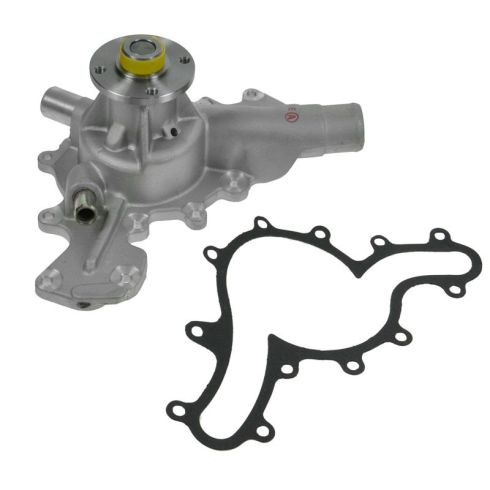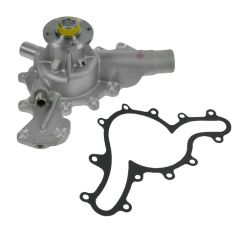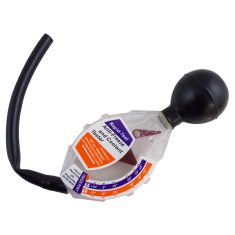1AEWP00089-Ford Mazda Mercury Engine Water Pump TRQ WPA07337

Replaces
2009 Ford Mustang V6 4.0L SOHC Engine Water Pump TRQ WPA07337

Frequently bought together
Product Reviews
Loading reviews
4.93/ 5.0
15
15 reviews
Ford Ranger Waterpump
August 23, 2017
The reason I bought the water pump from 1Auto was because of the installation video. The video was detailed and easy to follow. The pump was of excellent quality, perfect fit. Thanks again for the video, saved me a lot of time.
New water pump.
August 26, 2017
The water pump fit right in and had no more squealing after it was replaced. No question about it,I will buy from you again. Thanks.
K.H. Oklahoma
I love 1a
July 6, 2018
Part came fast and wasnt as expensive as local part stores I recommend one a auto to everybody
Prefect match
November 28, 2018
Right part the first time is it insulation and instructions.
Right Part Right Price
February 18, 2019
Part was exact fit to my 2002 Ford Explorer 4.0L V6. Highly Recommend you shop around, as I did, 1A Auto was the right part at the right price. Shipping was quick and on time.
June 15, 2019
Price very reasonable and good service. Been with you for quite sometime now and had got several parts for my cars
Perfect replacement
April 7, 2020
The water pump was a direct fit at a good price.
water pump for ford ranger
April 19, 2020
as always excellent service and fast delivery and quality products
Good service
August 15, 2020
Even though i ordered the wrong one they corectled the order in fast fastion, received the right one fast. good service
Great service
August 20, 2020
I recently purchased a waterpump for my vehicle through 1aauto..The shipping and price were outstanding!! Will definitely be shopping here again.
Perfect fit
January 21, 2021
2004 Ford Ranger, 4.0L V6. Direct replacement. Came with gasket. Video was a life saver. What also helps is the right tools. Video said the fan clutch bolt could be removed with extra tension on the engine belt, but that didnt work for me. They do recommend the specific tool in the video, I suggest renting or purchasing that. It only cost about $20 to buy at Auto Zone. Overall, completely satisfied.
2003 Ranger water pump
January 27, 2021
This is an exact fit replacement. Fits perfect on a 2003 Ford Ranger 4.0 V6. It works great. The gasket is a bit flimsy but if the original is in good shape, I reused it. Thanks
on the vehicle
December 17, 2022
Its on and doesn't leak.
June 8, 2023
works fine
Water Pump & Gasket for 2001 Ford Ranger 4.0L XLT
March 27, 2024
Ive been watching their instructional videos for years and have been continually grateful that they provide this common-access resource for people who wouldn't otherwise be able to run to a mechanic every time they need vehicle maintenance. The pump was an exact replacement, I would recommend seeing if your local automotive shop has a loan-a-tool program for the fan clutch wrench as that made the job go much faster. All in all, very happy with this purchase.
Customer Q&A
What direction is the impeller?
January 19, 2021
10
. are you asking which way the impeller spins on the water pump if so if youre sitting in the driver seat behind the engine the impeller spins to the right
January 20, 2021
Terry B
10
If you take a look at this information from Cardone, you will be able to reflect on your pump to see where the veins are and make the determination from there: https://my.cardone.com/techdocs/pt%2058-0009.pdf
January 20, 2021
Curtis L
10
Backward thread
January 20, 2021
Noel T
Ford is a registered trademark of Ford Motor Company. 1A Auto is not affiliated with or sponsored by Ford or Ford Motor Company.
See all trademarks.












